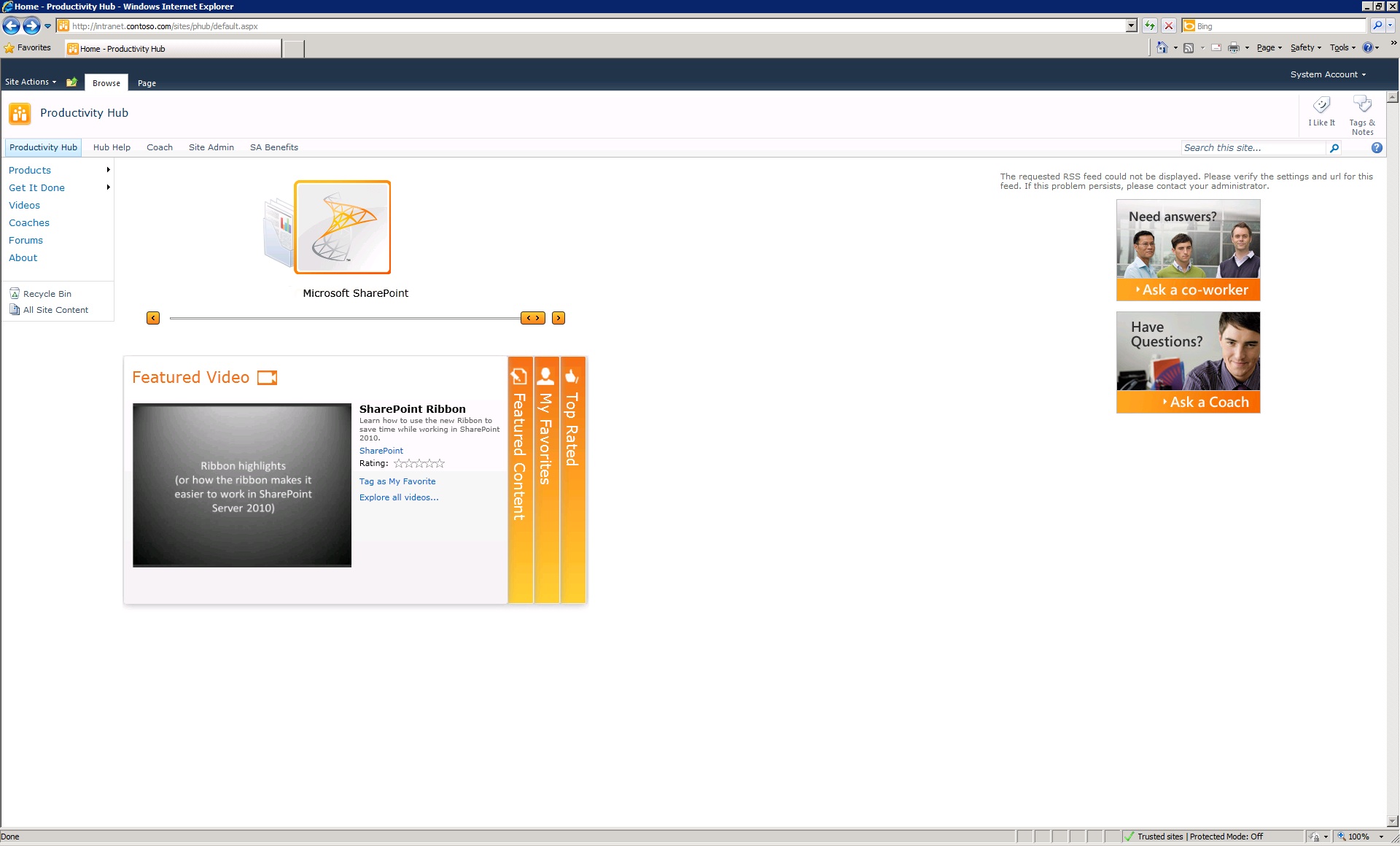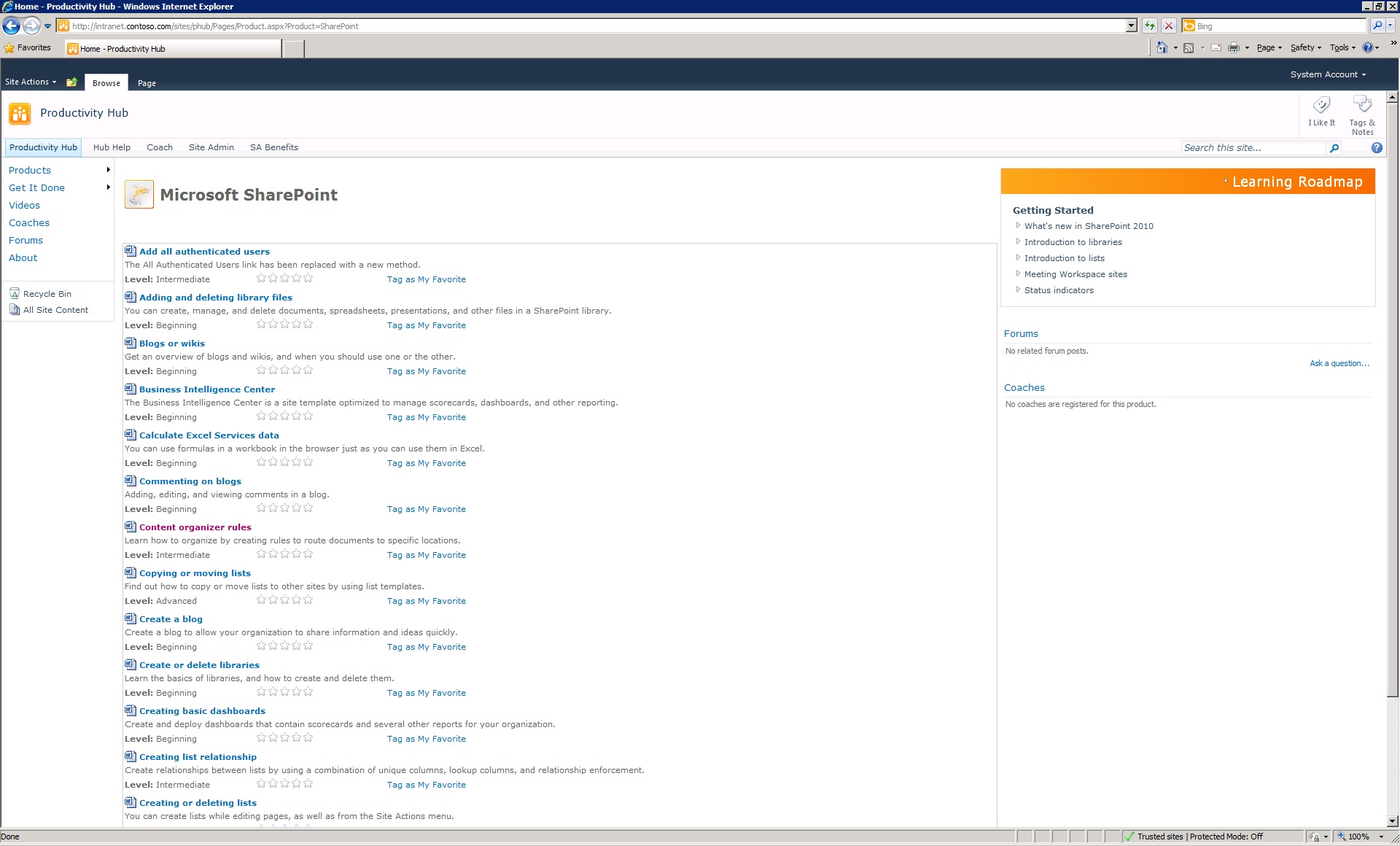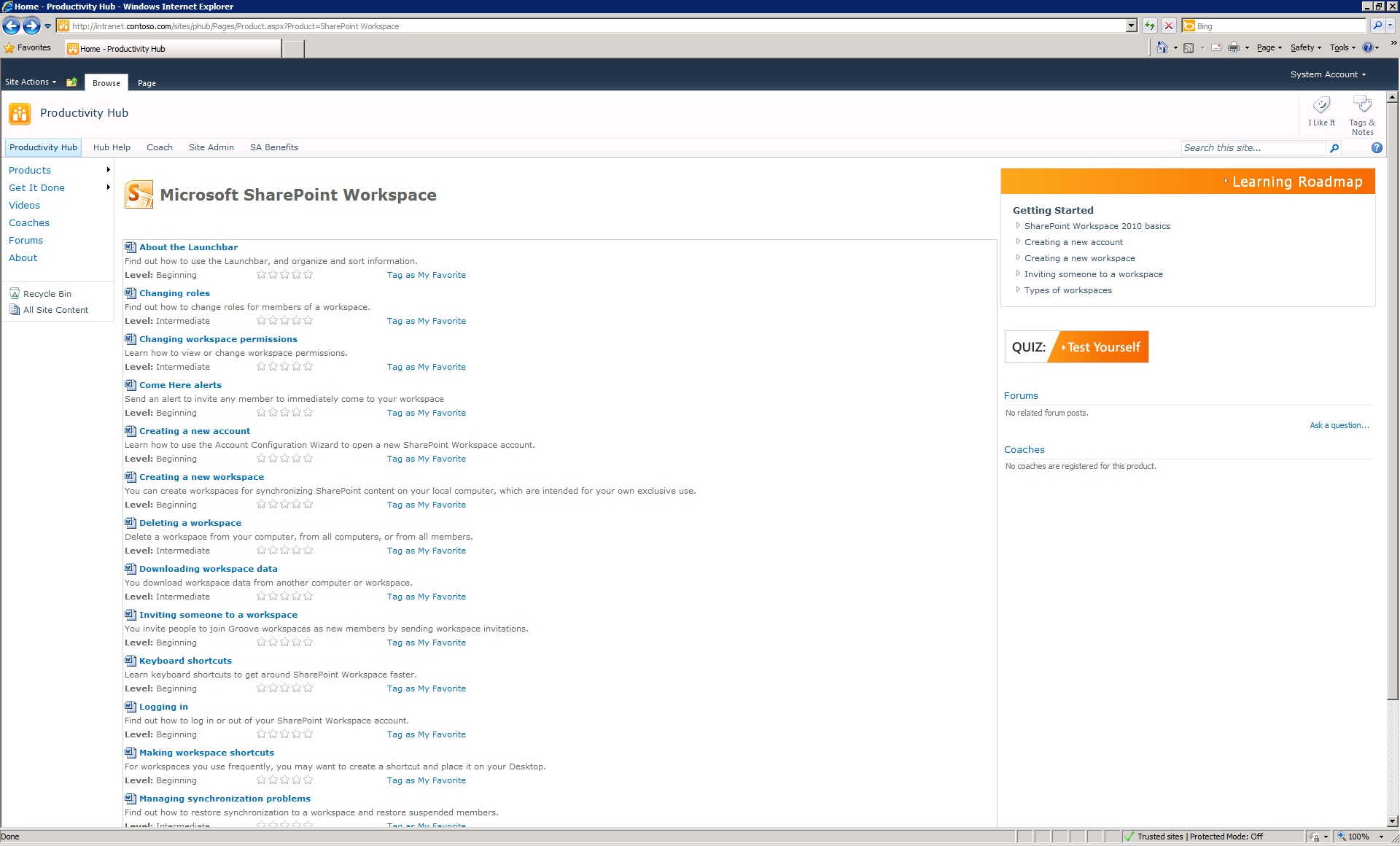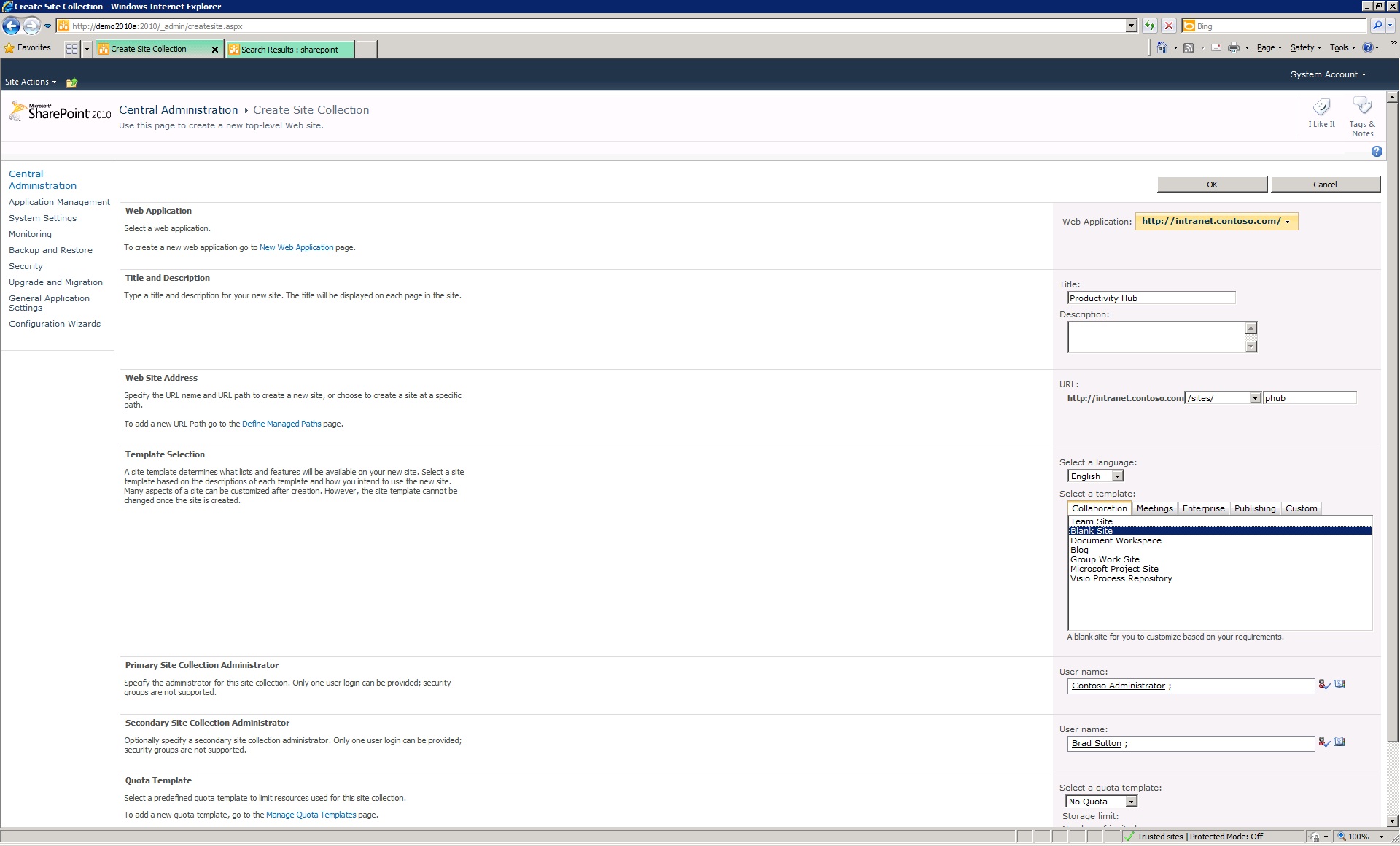Productivity Hub 2010 for SharePoint
The Productivity Hub 2010 version is now live on MSDN. You can download it here. I'm excited about Productivity Hub because it provides training for our business productivity tools and it is a great example of how SharePoint can be used to deliver online learning. Because its built on SharePoint, you can customize it in any way and even add training for other non-Microsoft tools you may have in your organization. Gayan Peiris provides a good overview of Productivity Hub in his blog post "What is the Productivity Hub?".
So what's new in Productivity Hub 2010?
I think the biggest improvement is the ease of deployment. There is a backup of the Hub site collection and a PowerShell install script to restore it and then there are content packs for the training materials for each product / version. It's just a site collection so you decide if you would like to create a new web application or include it as part of an existing one. You can install just the content packs you like. There are packs for SharePoint, SharePoint Workspace, Publisher, Visio, Word, Access, Communicator, Excel, InfoPath, Live Meeting, OneNote, Outlook, PowerPoint, Project, Windows 7 , and even the Ribbon! The 2007 legacy content is also available as separate "product" installs.
There is now a ‘Get it Done’ section that offers training content for business productivity & collaboration tasks and a new quiz feature.
So what's new in Productivity Hub 2010 for SharePoint?
There are about 60 or so new pieces of content for both SharePoint 2010 and SharePoint Workspace highlighting the new capabilities and a video on the SharePoint ribbon. While there is a SharePoint Workspace quiz, there is no SharePoint quiz at this time. Of course the blogs, forums, and coaching features are still included. Keep in mind that content packs are regularly updated so you can expect more content to come soon! Here are a few screenshots...
Productivity Hub Home:

Notice there are a couple of new web parts advertising coaches and the forums.
SharePoint Product Page Home:

SharePoint Workspace Product Page Home:

In this screenshot - you see the invitation to take a quiz on the right.
Installing the Hub
First I just wanted to install SharePoint 2010 and SharePoint Workspace 2010 content to get started.
Following the instructions in the install guide included with the download, I created a new site collection (Blank Site) on my Information Worker Demonstration Virtual Machine in central administration.

I extracted the contents of the ProductivityHub2010CoreInstall package and opened PowerShell (SharePoint 2010 Management Shell) and navigated to my extracted contents folder. I ran the install which restored the backup to my new site collection:
.\install https://intranet.contoso.com/sites/phub
Remember to create a new site collection as it will overwrite the existing contents of whatever URL you specify!
The next step I extracted the contents of the "ContentPack-1" package (where the SharePoint content is) to a new folder and navigated to the SharePoint subdirectory and ran the 2010 install script for just the SharePoint 2010 content:
.\install -huburl https://intranet.contoso.com/sites/phub -xml sharepoint_2010.xml
Note that the learning roadmap gets included automatically (remember there is no quiz yet).
Then I followed the same procedure for the SharePoint Workspace 'product' - navigating to that subfolder and then ran the install script:
.\install -huburl https://intranet.contoso.com/sites/phub -xml sharepointworkspace_2010.XML
I repeated the extraction and install steps above for "Content Pack-2" also included in the download. Note that any _2007 filename suffix is for 2007 content and the _All includes content applies to both the 2007 and 2010 versions. In my example, i was only intersted in the 2010 content. Don’t forget you will need to start and incremental crawl - in my case using the IW VM - of the FAST Content & Query to be able to get search results for the newly added content. Voilà!